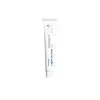What's inside
What's inside
 Key Ingredients
Key Ingredients

No key ingredients
 Benefits
Benefits

 Concerns
Concerns

No concerns
 Ingredients Side-by-side
Ingredients Side-by-side

Water
Skin ConditioningCyclopentasiloxane
EmollientHydrogenated Poly(C6-14 Olefin)
EmollientGlycerin
HumectantPanthenol
Skin ConditioningDicaprylyl Carbonate
EmollientCaprylyl Methicone
Skin ConditioningCaprylic/Capric Triglyceride
MaskingPropanediol
SolventNiacinamide
SmoothingDimethicone
EmollientLauryl Polyglyceryl-3 Polydimethylsiloxyethyl Dimethicone
Skin Conditioning1,2-Hexanediol
Skin ConditioningDisteardimonium Hectorite
StabilisingC30-45 Alkyl Cetearyl Dimethicone Crosspolymer
EmollientSodium Chloride
MaskingSorbitan Sesquioleate
EmulsifyingSodium Citrate
BufferingEthylhexylglycerin
Skin ConditioningAllium Cepa Bulb Extract
Skin ConditioningRosa Damascena Callus Extracellular Vesicles
Skin ConditioningAdenosine
Skin ConditioningDipotassium Glycyrrhizate
HumectantButylene Glycol
HumectantHydrogenated Lecithin
EmulsifyingPolyglyceryl-10 Stearate
Skin ConditioningBeta-Glucan
Skin ConditioningSodium Ascorbyl Phosphate
AntioxidantTocopherol
AntioxidantTranexamic Acid
AstringentGlutathione
Bisabolol
MaskingAlpha-Arbutin
Antioxidant3-O-Ethyl Ascorbic Acid
Skin ConditioningPyridoxine
Skin ConditioningFolic Acid
Skin ConditioningBiotin
AntiseborrhoeicPentylene Glycol
Skin ConditioningCyanocobalamin
Skin ConditioningXanthan Gum
EmulsifyingCyamopsis Tetragonoloba Gum
Emulsion StabilisingFructooligosaccharides
HumectantPhytic Acid
Glucose
HumectantHydrolyzed Pea Protein
EmollientThiamine Hcl
MaskingRiboflavin
Cosmetic ColorantLinoleic Acid
CleansingBeta-Carotene
Skin ConditioningBioflavonoids
Skin ConditioningSodium Succinate
BufferingGlycoproteins
Skin ConditioningWater, Cyclopentasiloxane, Hydrogenated Poly(C6-14 Olefin), Glycerin, Panthenol, Dicaprylyl Carbonate, Caprylyl Methicone, Caprylic/Capric Triglyceride, Propanediol, Niacinamide, Dimethicone, Lauryl Polyglyceryl-3 Polydimethylsiloxyethyl Dimethicone, 1,2-Hexanediol, Disteardimonium Hectorite, C30-45 Alkyl Cetearyl Dimethicone Crosspolymer, Sodium Chloride, Sorbitan Sesquioleate, Sodium Citrate, Ethylhexylglycerin, Allium Cepa Bulb Extract, Rosa Damascena Callus Extracellular Vesicles, Adenosine, Dipotassium Glycyrrhizate, Butylene Glycol, Hydrogenated Lecithin, Polyglyceryl-10 Stearate, Beta-Glucan, Sodium Ascorbyl Phosphate, Tocopherol, Tranexamic Acid, Glutathione, Bisabolol, Alpha-Arbutin, 3-O-Ethyl Ascorbic Acid, Pyridoxine, Folic Acid, Biotin, Pentylene Glycol, Cyanocobalamin, Xanthan Gum, Cyamopsis Tetragonoloba Gum, Fructooligosaccharides, Phytic Acid, Glucose, Hydrolyzed Pea Protein, Thiamine Hcl, Riboflavin, Linoleic Acid, Beta-Carotene, Bioflavonoids, Sodium Succinate, Glycoproteins
 Reviews
Reviews

Ingredients Explained
These ingredients are found in both products.
Ingredients higher up in an ingredient list are typically present in a larger amount.
1,2-Hexanediol is a synthetic liquid and another multi-functional powerhouse.
It is a:
- Humectant, drawing moisture into the skin
- Emollient, helping to soften skin
- Solvent, dispersing and stabilizing formulas
- Preservative booster, enhancing the antimicrobial activity of other preservatives
Butylene Glycol (or BG) is used within cosmetic products for a few different reasons:
Overall, Butylene Glycol is a safe and well-rounded ingredient that works well with other ingredients.
Though this ingredient works well with most skin types, some people with sensitive skin may experience a reaction such as allergic rashes, closed comedones, or itchiness.
Learn more about Butylene GlycolEthylhexylglycerin (we can't pronounce this either) is commonly used as a preservative and skin softener. It is derived from glyceryl.
You might see Ethylhexylglycerin often paired with other preservatives such as phenoxyethanol. Ethylhexylglycerin has been found to increase the effectiveness of these other preservatives.
Glycerin is already naturally found in your skin. It helps moisturize and protect your skin.
A study from 2016 found glycerin to be more effective as a humectant than AHAs and hyaluronic acid.
As a humectant, it helps the skin stay hydrated by pulling moisture to your skin. The low molecular weight of glycerin allows it to pull moisture into the deeper layers of your skin.
Hydrated skin improves your skin barrier; Your skin barrier helps protect against irritants and bacteria.
Glycerin has also been found to have antimicrobial and antiviral properties. Due to these properties, glycerin is often used in wound and burn treatments.
In cosmetics, glycerin is usually derived from plants such as soybean or palm. However, it can also be sourced from animals, such as tallow or animal fat.
This ingredient is organic, colorless, odorless, and non-toxic.
Glycerin is the name for this ingredient in American English. British English uses Glycerol/Glycerine.
Learn more about GlycerinWater. It's the most common cosmetic ingredient of all. You'll usually see it at the top of ingredient lists, meaning that it makes up the largest part of the product.
So why is it so popular? Water most often acts as a solvent - this means that it helps dissolve other ingredients into the formulation.
You'll also recognize water as that liquid we all need to stay alive. If you see this, drink a glass of water. Stay hydrated!
Learn more about Water